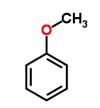Home > Offer to Sell > Intermediates > Pharmaceutical intermediates > Anisole CAS 100-66-3 for Preparing Perfumery (jerryzhang001@chembj.com)
Anisole CAS 100-66-3 for Preparing Perfumery (jerryzhang001@chembj.com)
Inquiry
| Post Date: | Mar 24,2017 |
| Expiry Date: | Mar 24,2018 |
| Detailed Description: |
Cas No. :100-66-3
Anisole CAS 100-66-3 for Preparing Perfumery
Product Name: Anisole; Synonyms: ANISOL;ANISOLE;METHOXYBENZENE;METHYL PHENYL ETHER;AQUALINE STANDARD 1.0;FEMA 2097;MOB;PHENOL METHYL ETHER CAS: 100-66-3; MF: C7H8O; MW: 108.14; EINECS: 202-876-1; Product Categories: Benzene derivatives;Anisole;Other Reagents;ACS and Reagent Grade Solvents;Amber Glass Bottles;Carbon Steel Cans with NPT Threads;ReagentPlus;ReagentPlus Solvent Grade Products;Semi-Bulk Solvents;Solvent Bottles;Solvent by Application;Solvent Packaging Options;Solvents;Building Blocks;C2 to C7;Chemical Synthesis;Ethers;Organic Building Blocks;Oxygen Compounds;Reagent;Pyrimidines; Melting point: -37 °C; Boiling point: 154 °C(lit.); density: 0.995 g/mL at 25 °C(lit.); vapor density: 3.7 (vs air); vapor pressure: 10 mm Hg ( 42.2 °C); Fp: 125 °F; storage temp.: Store at RT. Water Solubility: 1.6 g/L (20 ºC); Chemical properties: It is a colorless liquid, with an aromatic odor, insoluble in water, soluble in alcohol, ether. Description: Anisole, also known as anise ether, methoxybenzene methyl phenyl ether, is a colorless liquid with an odor of anise, sweet, naturally present in the tarragon oil, insoluble in water, soluble in alcohol, ether, acetone, soluble in benzene. It irritates the eyes and mucous membranes. It is obtained originally from distilled methyl salicylate or methoxybenzoate, is now mainly produced through the reaction of methylating agent of dimethyl sulfate with phenol in alkaline aqueous solution. Anisole is prone to start Electrophilic substitution reaction in aromatic nucleus, and condensed with formaldehyde to produce viscous oil or resin material, reacts with phosphorus trichloride to produce chlorine anisole and a small amount of o-chloro product, reacts with thionyl chloride to produce 2,4,6-trichloroanisole. In addition, anisole is heated to react with hydrobromic or hydroiodic, carbon - oxygen bond cleaves, phenol and halogenated methane is produced, which is an important method for determining methoxy group of benzene ring. Usage: 1. GB2760-1996 stipulates it as allowable usable spices in food. It is mainly used for the preparation of vanilla, fennel and beer flavor. 2. It is used for analyzing the reagents, solvents, and used for preparing perfumery and enteral pesticides. 3. It is used for the production of perfumes, dyes, pharmaceuticals, pesticides, also used as a solvent. 4. It is used in organic synthesis, also used as solvents, perfume and insect repellent. 5. It is used as solvents for recrystallization, fillers of thermostat, and used for measuring refractive index, as spices and organic synthesis intermediates. |
| CAS Registry Number: | 100-66-3 |
| Synonyms: | ;Methoxybenzene;Methyl phenyl ether;ANISOL (METHOXYBENZENE);Phenol methyl ether;Phenyl methyl ether;Phenylmethylether:; |
| Molecular Formula: | C7H8O |
| Molecular Weight: | 108.1378 |
| Molecular Structure: | 
|
| Hazard Symbols: |  Xn:Harmful; Xn:Harmful; |
| Risk Codes: | R10:; R20:; R38:; |
| Safety Description: | S16:; S26:; S37/39:; |
| Company: | Nanjing Bangnuo Biotechnology Co., Ltd. [ China ] |
| Contact: | Jerry Zhang |
| Tel: | 86-25-52198306 |
| Fax: | 86-25-52198306 |
| Email: | jerryzhang001@chembj.com |
-
Disclaimer statement:The information and data included above have been realized by the enterprises and compiled by the staff, and are subject to change without notice to you. The Chemnet makes no warranties or representations whatsoever regarding the facticity, accuracy and validity of such information and data. In order to ensure your interest, we suggest you chose the products posted by our gold suppliers or VIP members.


